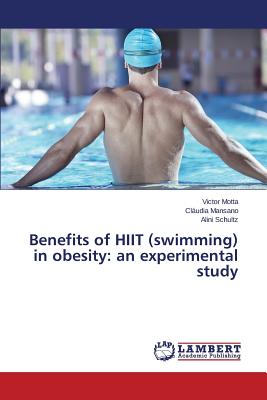
Benefits of HIIT (swimming) in obesity: an experimental study
Paperback
Currently unavailable to order
Please enter your email and a message will be sent to you when this product becomes available on our website.
ISBN13: 9783659692406
Publisher: Lap Lambert Academic Pub
Published: Apr 10 2015
Pages: 60
Weight: 0.22
Height: 0.14 Width: 6.00 Depth: 9.00
Language: English
Also in
General Music
Less Noise, More Soul: The Search for Balance in the Art, Technology and Commerce of Music
Flitner, David
Paperback
Taylor Swift by the Book: The Literature Behind the Lyrics, from Fairy Tales to Tortured Poets
Tatreau, Tiffany
Feder, Rachel
Hardcover
Every Valley: The Desperate Lives and Troubled Times That Made Handel's Messiah
King, Charles
Hardcover
Color & Frame - Bible Coloring: Psalms (Adult Coloring Book)
Publications International Ltd
New Seasons
Paperback
Dilla Time: The Life and Afterlife of J Dilla, the Hip-Hop Producer Who Reinvented Rhythm
Charnas, Dan
Paperback
The Little Guide to Dolly Parton: It's Hard to Be a Diamond in a Rhinestone World
Hippo! Orange
Hardcover
3 Shades of Blue: Miles Davis, John Coltrane, Bill Evans, and the Lost Empire of Cool
Kaplan, James
Hardcover
Weird Scenes Inside the Canyon: Laurel Canyon, Covert Ops & the Dark Heart of the Hippie Dream
McGowan, David
Paperback
Bruce Songs: The Music of Bruce Springsteen, Album-By-Album, Song-By-Song
Campbell, Kenneth L.
Womack, Kenneth
Hardcover
Dolly Parton All the Songs: The Story Behind Every Track
Somville, Damien
Walker, Lalie
Benoît, Simon
Hardcover
The Carols of Cthulhu: Horrifying Holiday Hymns from the Lore of H. P. Lovecraft
Slater, Mike
Hardcover
ATEEZ Coloring Book for ATINY: Relaxation, Fun, Creativity, (Large Print Edition)
Ftw, Kpop
Paperback
Taylor Swift Is Life: A Superfan's Guide to All Things We Love about Taylor Swift
Perricone, Kathleen
Hardcover
Meet Me in the Bathroom: Rebirth and Rock and Roll in New York City 2001-2011
Goodman, Lizzy
Paperback
And on Piano ...Nicky Hopkins: The Extraordinary Life of Rock's Greatest Session Man
Dawson, Julian
Paperback
Music for Little Mozarts Notespeller & Sight-Play Book, Bk 2: Written Activities and Playing Examples to Reinforce Note-Reading
Kowalchyk, Gayle
Lancaster, E. L.
Barden, Christine H.
Paperback
Listening to the Music the Machines Make: Inventing Electronic Pop 1978-1983
Evans, Richard
Paperback
What Do I Do with My Baby All Day?!: Simple Ways to Have the Best First Year Together
Benhorin, Vered
Paperback
Quantum Criminals: Ramblers, Wild Gamblers, and Other Sole Survivors from the Songs of Steely Dan
Pappademas, Alex
Lemay, Joan
Hardcover
Musicality: How you too can learn music like a gifted prodigy, unlock your musical instinct, and unleash your inner natural.
Sutton, Christopher
Hardcover
3 Shades of Blue: Miles Davis, John Coltrane, Bill Evans, and the Lost Empire of Cool
Kaplan, James
Paperback
Every Valley: The Desperate Lives and Troubled Times That Made Handel's Messiah (Large Print Edition)
King, Charles
Paperback
Promise That You Will Sing about Me: The Power and Poetry of Kendrick Lamar
Lewis, Miles Marshall
Hardcover
Get More Fans: The DIY Guide to the New Music Business (2023 Edition)
Cannon, Jesse
Thomas, Todd
Paperback
Color & Frame - Bible Coloring: Hymns (Adult Coloring Book)
New Seasons
Publications International Ltd
Paperback
Music Theory Note by Note: Your Guide to How Music Works--From Notes and Rhythms to Complete Compositions
Miller, Michael
Paperback
The Prs Electric Guitar Book: A Complete History of Paul Reed Smith Electrics
Burrluck, Dave
Paperback
Bruce Springsteen: All the Songs: The Story Behind Every Track
Margotin, Philippe
Guesdon, Jean-Michel
Hardcover
Songwriting Without Boundaries: Lyric Writing Exercises for Finding Your Voice
Pattison, Pat
Paperback
Futuromania: Electronic Dreams, Desiring Machines, and Tomorrow's Music Today
Reynolds, Simon
Paperback
World Within a Song: Music That Changed My Life and Life That Changed My Music
Tweedy, Jeff
Hardcover
Sellout: The Major-Label Feeding Frenzy That Swept Punk, Emo, and Hardcore (1994-2007)
Ozzi, Dan
Paperback
Pink Floyd All the Songs: The Story Behind Every Track
Margotin, Philippe
Guesdon, Jean-Michel
Hardcover
Play It! Children's Songs: A Superfast Way to Learn Awesome Songs on Your Piano or Keyboard
Kemmeter, Jennifer
Marrone, Antimo
Paperback
Amplify: How to Use the Power of Connection to Engage, Take Action, and Build a Better World
Met, Adam
Hardcover
The Mysticism of Sound and Music: The Sufi Teaching of Hazrat Inayat Khan
Khan, Hazrat Inayat
Paperback
Rolling Stone Encyclopedia of Rock & Roll: Rolling Stone Encyclopedia of Rock & Roll
Rolling Stone, Editors
Paperback
Green Day FAQ: All That's Left to Know about the World's Most Popular Punk Band
Bordowitz, Hank
Paperback
The Collected Works of Jim Morrison: Poetry, Journals, Transcripts, and Lyrics
Morrison, Jim
Hardcover
Music Money and Success 8th Edition: The Insider's Guide to Making Money in the Music Business
Brabec, Jeff
Brabec, Todd
Paperback
College Prep for Musicians: A Comprehensive Guide for Students, Parents, Teachers, and Counselors
Bosler, Annie
Greene, Don
Tesar, Kathleen
Paperback


 Sign-In
Sign-In Cart
Cart